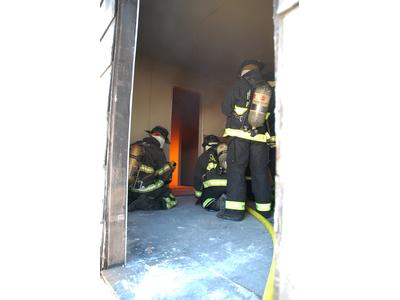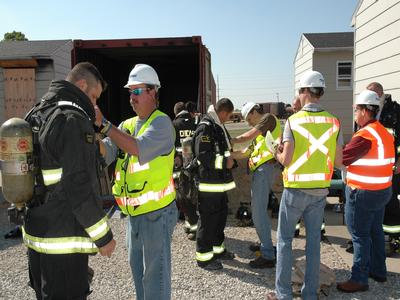Evaluation of Dermal Exposure to Polycyclic Aromatic Hydrocarbons in Firefighters - NIOSH lead
Summary
Funding provided by: National Institute of Occupational Safety and Health
The Health Hazard Evaluation Program of the National Institute for Occupational Safety and Health (NIOSH) carried out a study of fire fighters’ exposure to polycyclic aromatic hydrocarbons (PAHs) and other aromatic hydrocarbons during controlled structure burns in partnership with IFSI. The project was focused on determining if these chemicals produced during fires pass through the firefighters PPE and skin and enter the fire fighters’ bodies. Some PAHs and other aromatic hydrocarbons are known or suspected of causing cancer.
IFSI Research hosted the NIOSH team and firefighters from the Chicago Fire Department, where fire fighters fought a controlled structure burn. Fire fighters wore new or freshly laundered turnout gear each day and wore self-contained breathing apparatus (SCBA) throughout each scenario. The burns took place in structures with drywall interiors and fires fueled by typical family room furniture. Before and after firefighting, NIOSH scientists collected air, breath, urine, and wipe samples of the skin (forearms, hands, neck, face, and scrotum). These samples were analyzed for PAHs and/or aromatic hydrocarbons in the air during fire fighting, on fire fighters’ skin before and after firefighting, and in fire fighters’ blood and urine before and after fire fighting.
This study provided seminal evidence that benzene and some of the PAHs released during the controlled burns entered the fire fighters’ bodies even though fire fighters wore SCBA and full PPE throughout. The PAHs and benzene most likely entered through skin on the neck, which was the least protected area on the fire fighters’ bodies. Benzene released from contaminated turnout gear may also have been inhaled when fire fighters removed their gear after fire fighting.
Related Projects
- Protection from Chemical, Thermal, and Cardiovascular Risks: Impact of PPE Laundering and Hood Design
- Revolutionizing the Protective Hood: Particulate Protection, Cleaning Effectiveness, and Training Demonstration- North Carolina State University lead
- Cardiovascular and Chemical Exposure Risks on Today's Fireground

